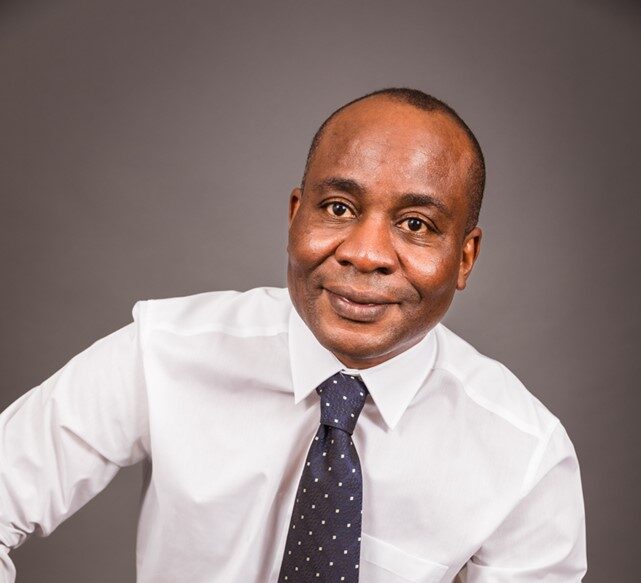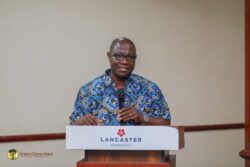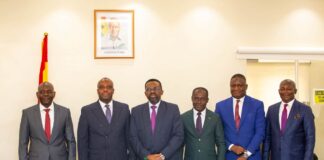SIX, seven or even eight-figure enterprises are all rungs on the same ladder and will share many building blocks. But they will also be worlds apart in how they were created and how they operate. It’s the same air but as the altitude increases, the number of those atop the mountain thins.
You’d be forgiven for misconstruing the key ingredients needed to build a billion-dollar business. After all, it’s an extremely rare feat only achieved by the very few that set out to accomplish it. Although many would assume it’s just a case of continuously scaling a successful formula, while this is true to an extent, the process goes much deeper than that.
The process is transformational and evolves drastically throughout the stages of growth.
Components aside, the key to all of this – which this series will deep-dive into – is the mindset needed; and crucially, the transforming evolution of this mindset. At each stage of the story I’m about to tell, there was a huge shift in mindset that was needed to continue the march forward. Much like the different stages of a chess game, there are times to consolidate, move forward boldly, defend and seize the advantage. In most cases, only once all of these fluid stages are navigated and executed successfully can the victory be won.
Chess provides many metaphorical insights into life and none more so than in business – you progress or regress one move at a time and there is always an opposition to overcome.
Through this lengthy anecdote, I hope that other business leaders will be able to identify a comparable roadmap for their own journey of growth. Of course, in business, it’s never going to be one-size-fits-all, but we do all wear shoes!
The transition
Back in 2008, a business year that can be globally remembered for all the wrong reasons, I had just finished a laborious four-year assignment in Nigeria and it was now time to transition into another role within the company. At this point in my life, I was intending to move to South Africa; but as most of us will know all too well, the best-laid plans rarely fall into place at the time we want them to. This delay was actually the foundation of a huge progression in my career; and ultimately, when I did finally move to South Africa, the achievements and their rewards during this period put me in a much better position to do so.
With the details of my impending reassignment unknown, I was invited to a meeting with the company president – the grande fromage himself, which would revolve around a presentation given to the whole of the senior leadership team. The content of this momentous meeting of minds was a complete mystery, which only added to the suspense of what was clearly going to be an introduction to remember.
This company president was a brand-new appointment and although new to the company, across the multi-national business world, he was well-known to be a strong leader with a fiercely proactive and ambitious mindset. The punchline of the meeting certainly compounded his reputation and left the assembly of seasoned professionals reeling at the boldness of his ambitious plans.
Over the course of the detailed presentation, his ‘Vision 2020’ plans were revealed; and it was to be based on six pivotal pillars – profit, portfolio, people, partners, planet, and productivity. It was a huge initiative in which the global long-term vision for the company was clearly defined – and he wasn’t messing around!
The biggest point came down to profit – he wanted the company’s profit to more than double by the year 2020 – an audacious goal and certainly no mean feat in a fiercely competitive market. For carbonated soft drinks, the company was long established as the global market leader, but to make it even more of a moon shot, he also said he wanted the company to become the world’s number one non-alcoholic ready-to-drink player in ALL categories. In the drinks business, that large niche falls under the pseudonym NARTD and includes the likes of conventional soft drinks, iced tea, juice-derived drinks, and lactics (dairy-based drinks) to name a few.
Back then in 2008, at least 95 percent of the company’s portfolio was in carbonated soft drinks, and this was a hugely profitable business, built over several decades, that made a lot of money and also had a huge and consistent upward growth.
A point the company president majored on was that the non-carbonated drinks represented a lesser opportunity, but it was a huge market nonetheless and he wanted this area of our business to grow substantially from 5 percent to 30 percent of the company’s revenue.
This was the second time during the meeting it was clear that everyone in attendance, myself included, was quite taken aback at the magnitude of the statement. But it was also apparent that however ambitious the president’s goals were, they were also justified and a good course to chart on the journey of continuous improvement.
Thrown into the deep
The upshot of this seismic meeting was that a few weeks after the dust had settled, it was little old me that was appointed the leader of this 5%-30% mission, which had so far already resulted in two failed attempts under different leadership. I had been well and truly thrown in at the deep end, where the sharks were still chewing on my predecessors, and it was definitely a sink-or-swim scenario – something that scared and excited me in equal measure. I have always loved a challenge. This was my career-defining Everest, but I had no team in place and I had to build everything from scratch with very limited resources.
One of the key points I was instructed with as I took on the role was that I was going to have to wear an ‘entrepreneurial hat’ when tackling the course of the coming challenges. I realised that this was especially going to be the case in the early stages, as I would be effectively starting from scratch and building the new brands from the ground up. I, in fact, was an entrepreneur!
Soon after, on one glorious morning, I found myself based in East Africa and responsible for a complex and diverse business unit that encompassed 27 countries and a population of 374 million people.
With the stage set for Lionel’s seismic mission, in the upcoming second instalment, he delves into the initial phases of the plan and the array of complexities in the market he was tasked with conquering.
Lionel Marumahoko is an Executive Coach, Leadership Speaker, and Business Advisor who specialises in complex transformation growth and new market entry in Africa.










